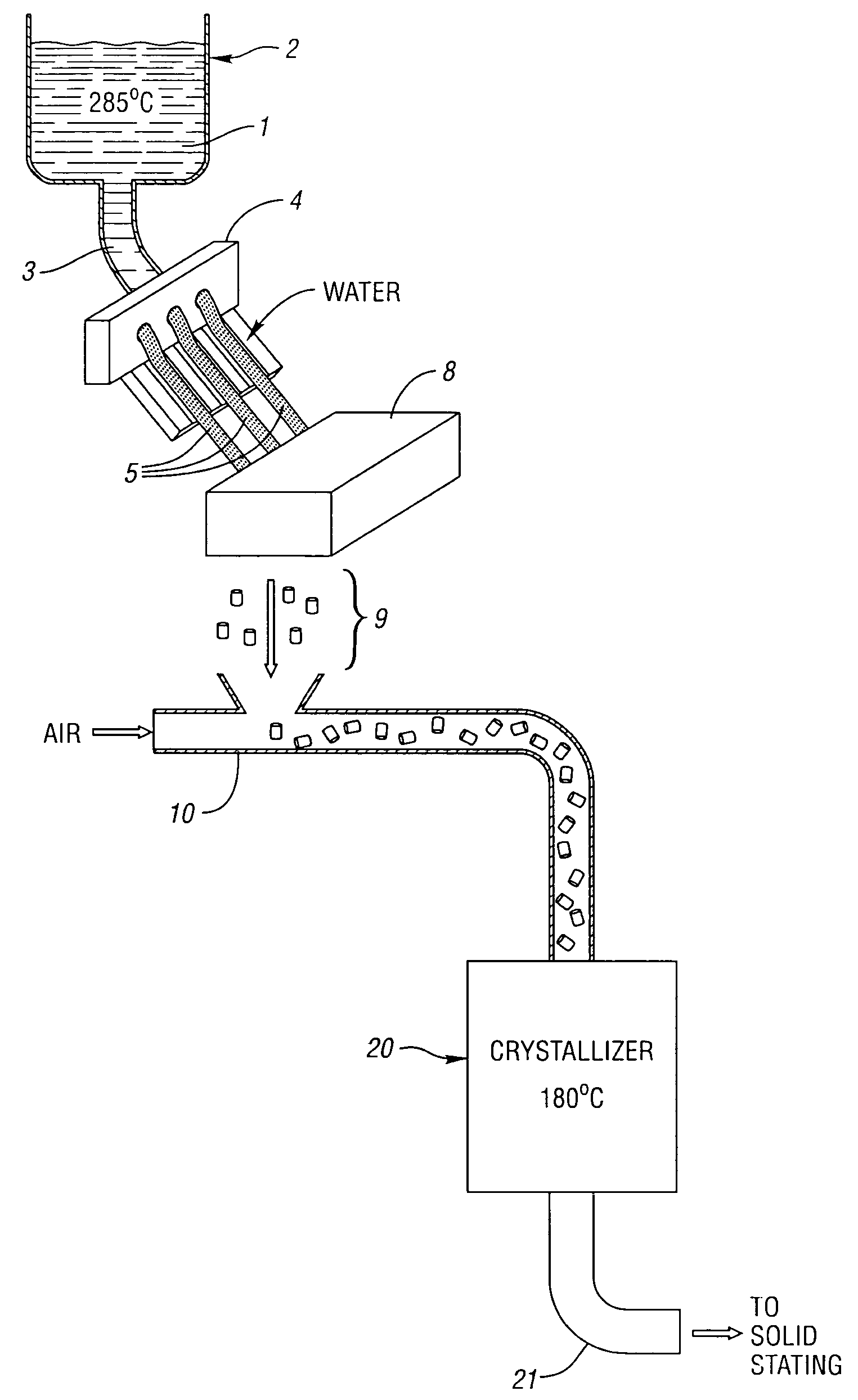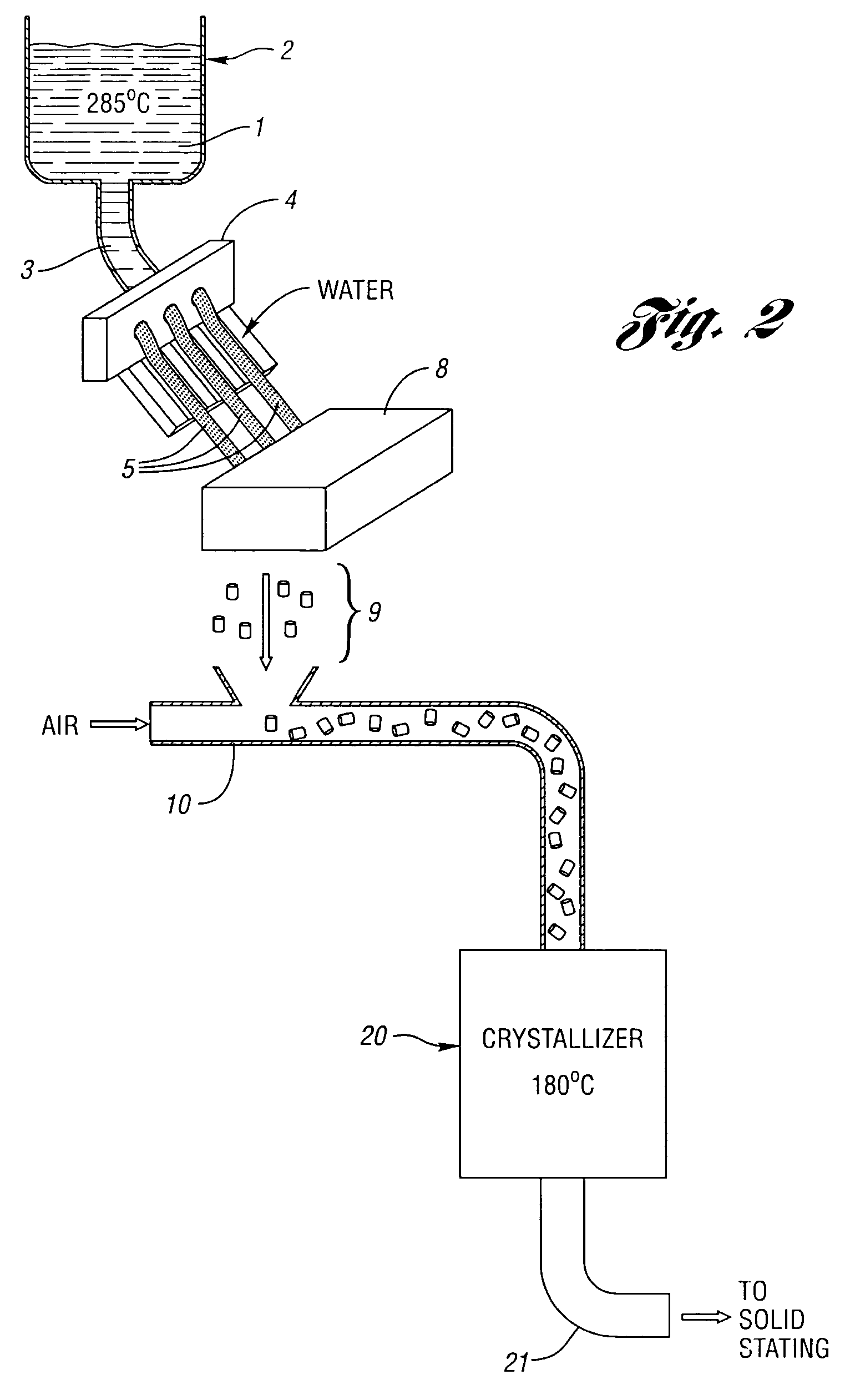Direct coupling of melt polymerization and solid state processing for PET
a technology of solid state processing and melt polymerization, which is applied in the field of commercial production of polyethylene terephthalate (“ pet ”) polymers, can solve the problems of complex solid state processing, high energy consumption of pet, and high achieves the effect of reducing the energy consumption of pet, and reducing the cost of pet production
- Summary
- Abstract
- Description
- Claims
- Application Information
AI Technical Summary
Benefits of technology
Problems solved by technology
Method used
Image
Examples
Embodiment Construction
)
[0013]The esterification, oligomerization, and other process steps up to and including polycondensation may be performed conventionally or by any process where pellets are produced from a polymerization melt. The improvement provided by the subject invention takes place during and / or following pelletization, and through the crystallization stage.
[0014]The PET polymers are conventional, and are polymers prepared from terephthalic acid and ethylene glycol. While dimethylterephthalate may in principle be used as well as terephthalic acid, use of the latter is preferred. In addition, the PET polymers may contain up to 20 mol percent, preferably up to 10 mol percent, and more preferably no more than 5 mol percent of dicarboxylic acids other than terephthalic acid, and the same mol percentages of glycols (diols) other than ethylene glycol.
[0015]Examples of other suitable dicarboxylic acids which may be used with terephthalic acid are isophthalic acid, phthalic acid, naphthalene dicarboxy...
PUM
| Property | Measurement | Unit |
|---|---|---|
| temperature | aaaaa | aaaaa |
| Tg | aaaaa | aaaaa |
| temperature | aaaaa | aaaaa |
Abstract
Description
Claims
Application Information
 Login to View More
Login to View More - R&D
- Intellectual Property
- Life Sciences
- Materials
- Tech Scout
- Unparalleled Data Quality
- Higher Quality Content
- 60% Fewer Hallucinations
Browse by: Latest US Patents, China's latest patents, Technical Efficacy Thesaurus, Application Domain, Technology Topic, Popular Technical Reports.
© 2025 PatSnap. All rights reserved.Legal|Privacy policy|Modern Slavery Act Transparency Statement|Sitemap|About US| Contact US: help@patsnap.com



